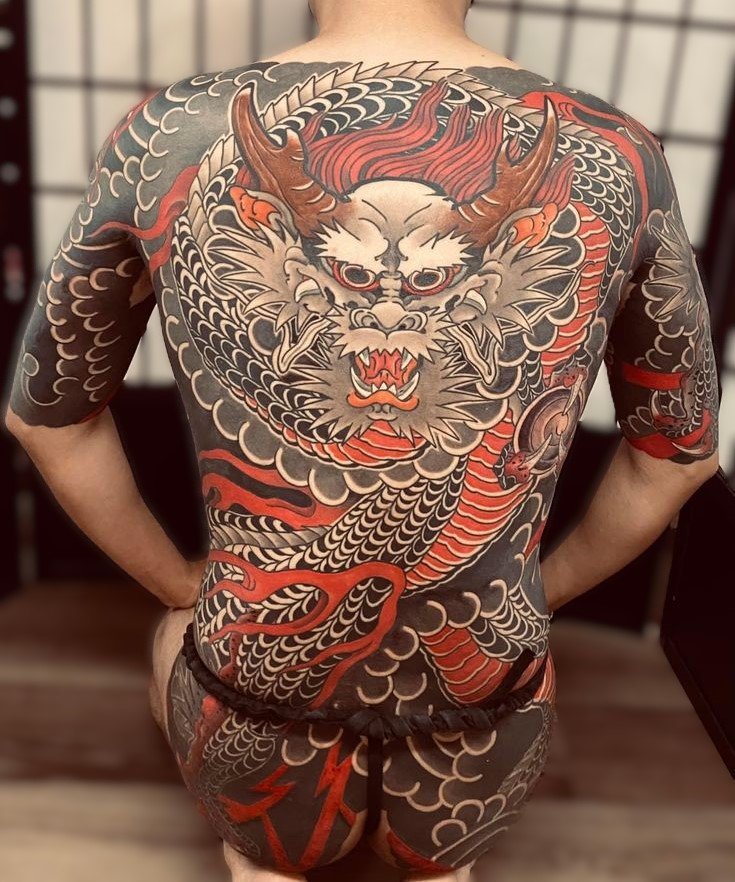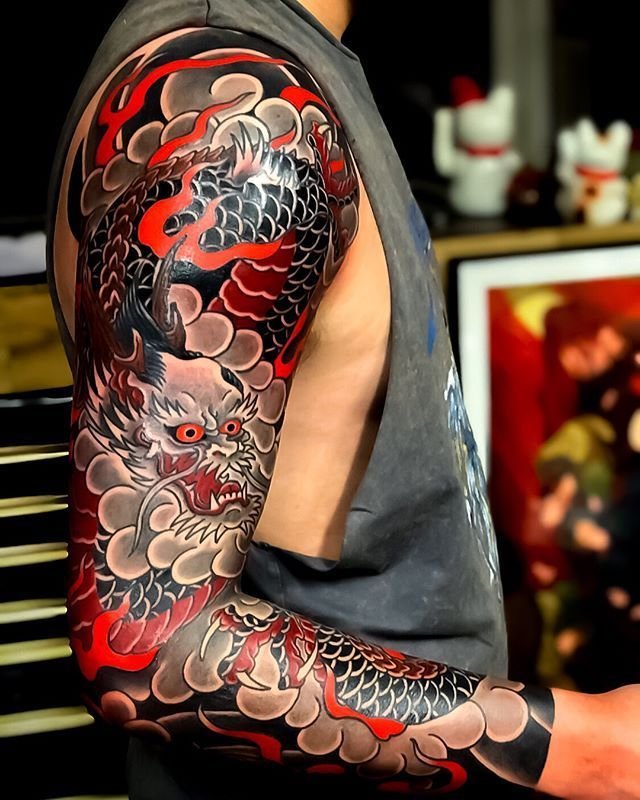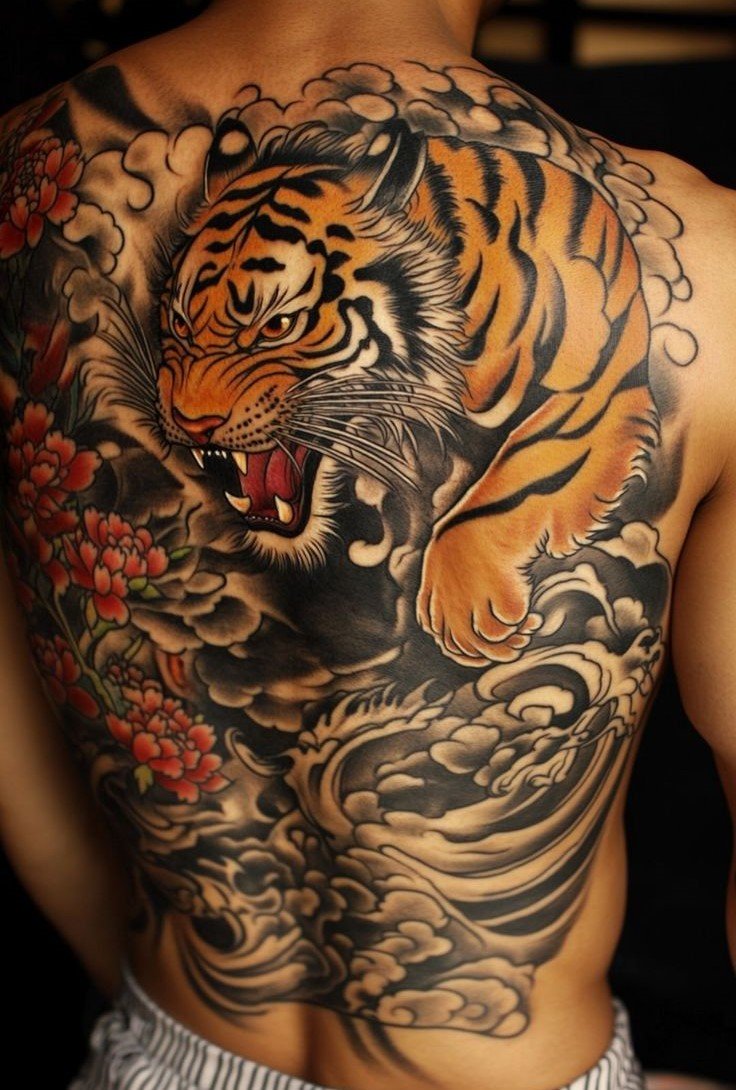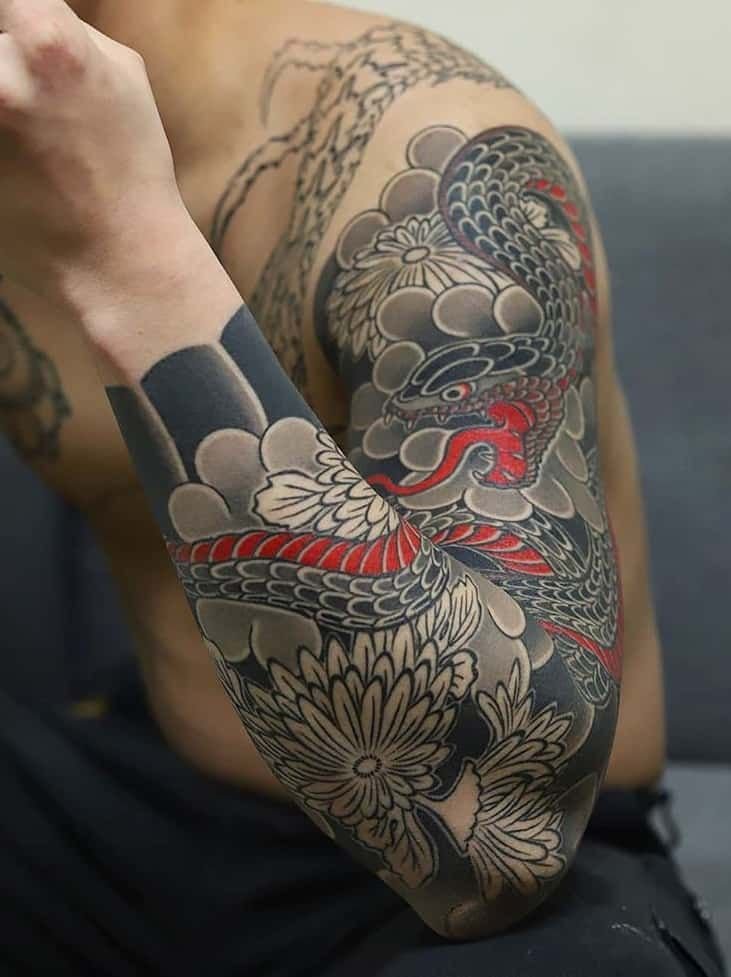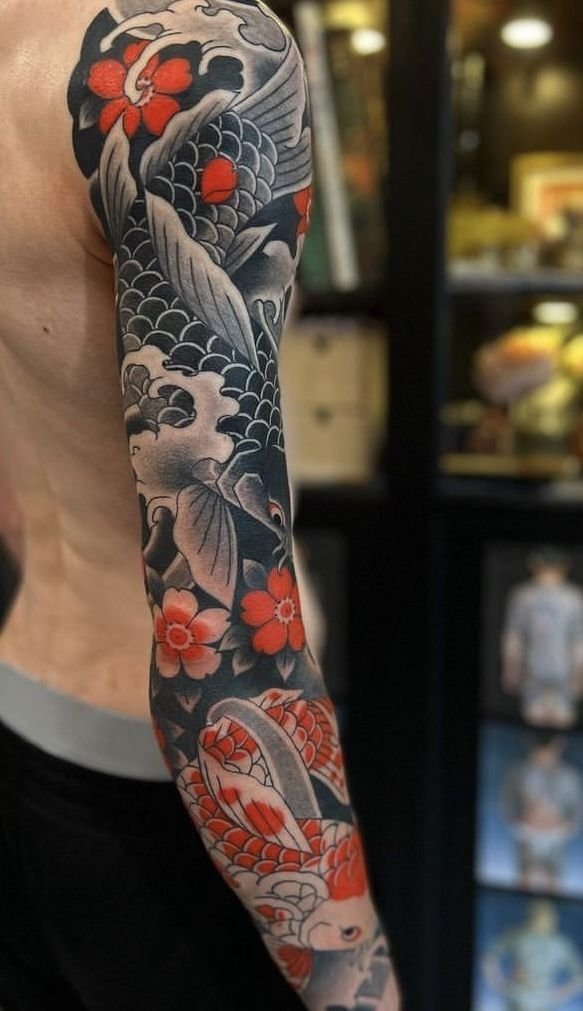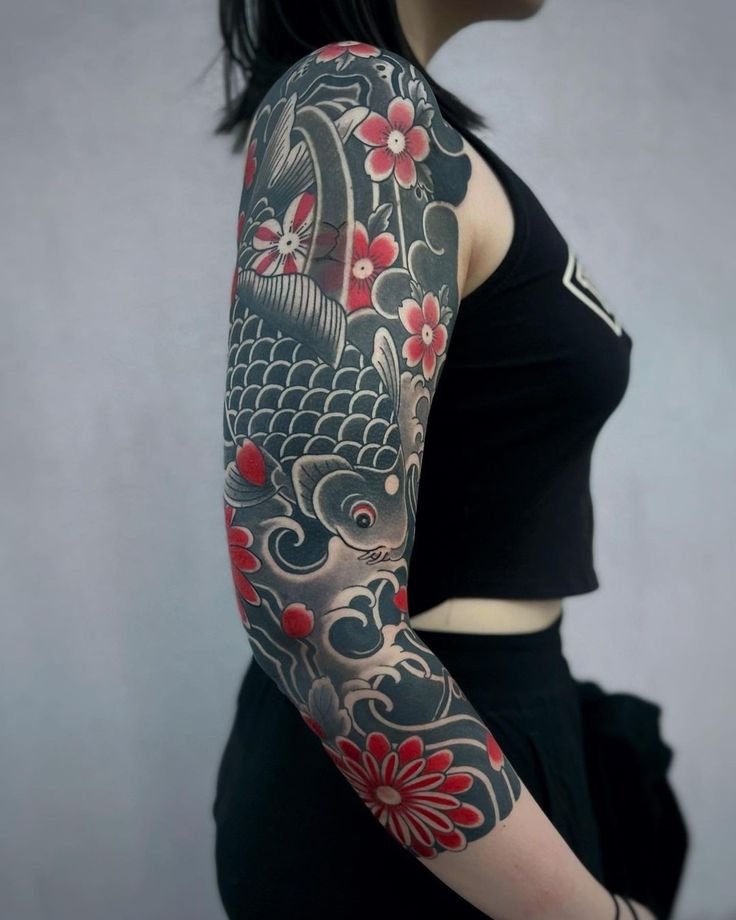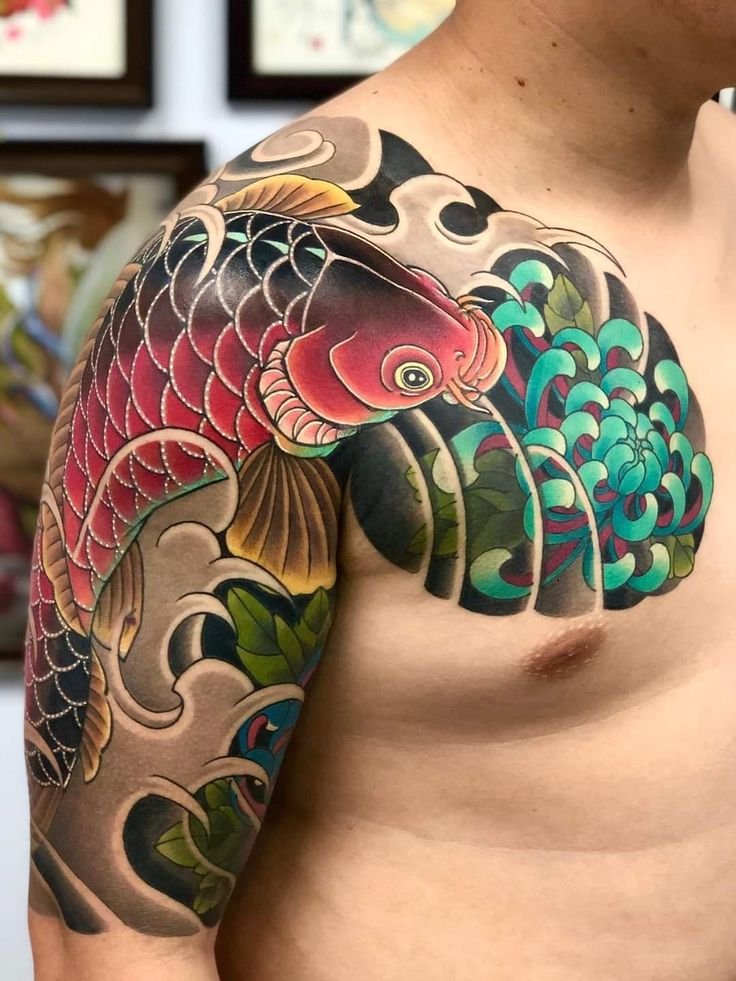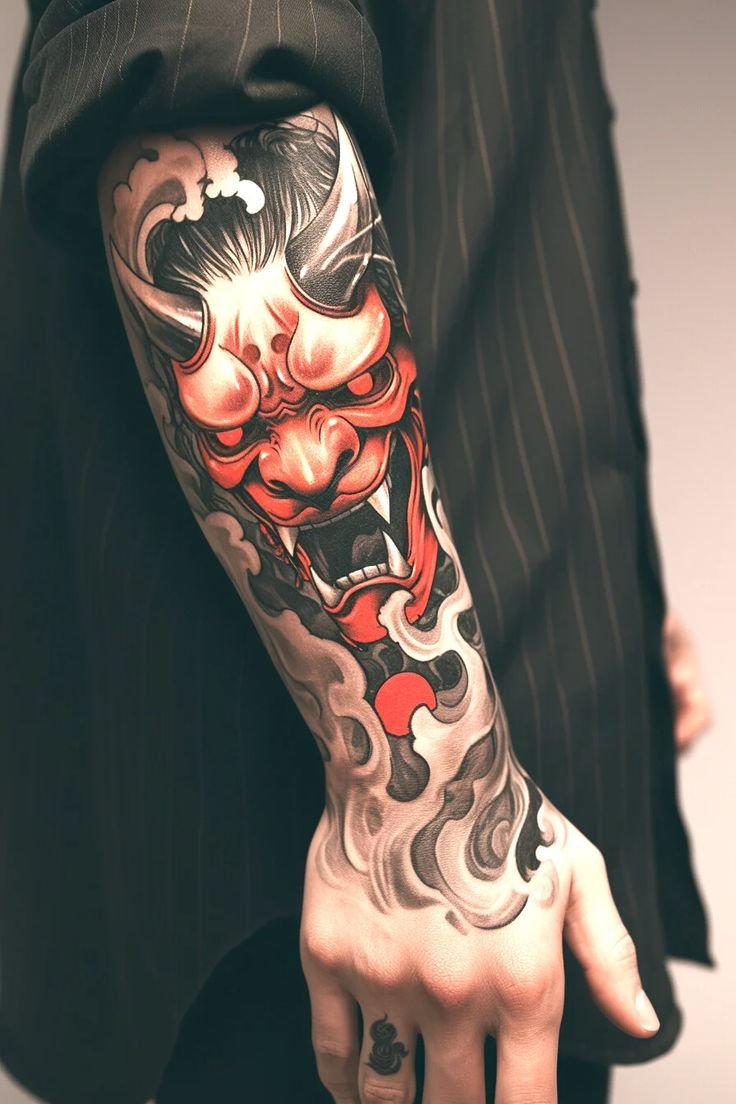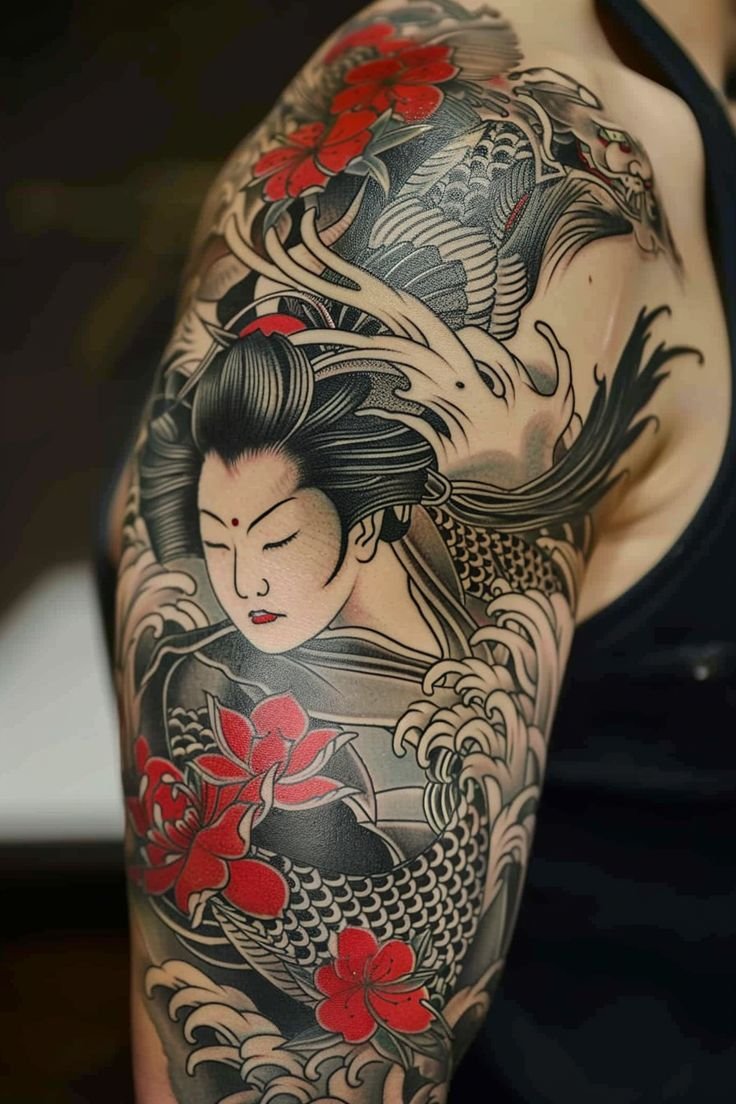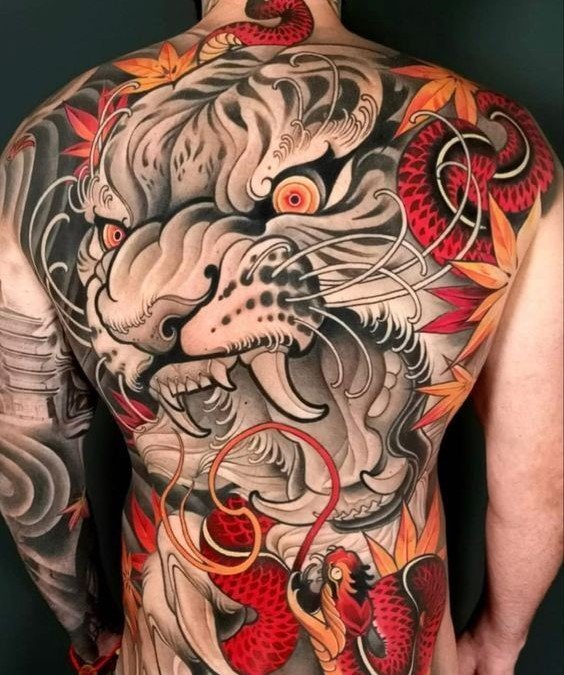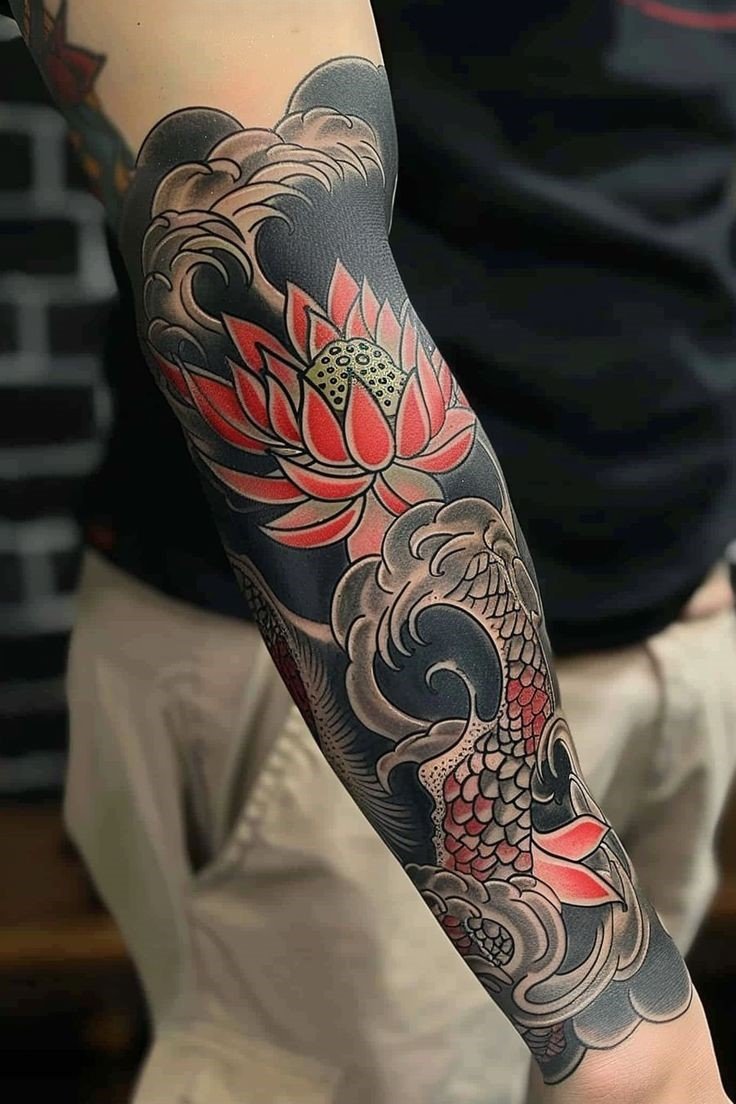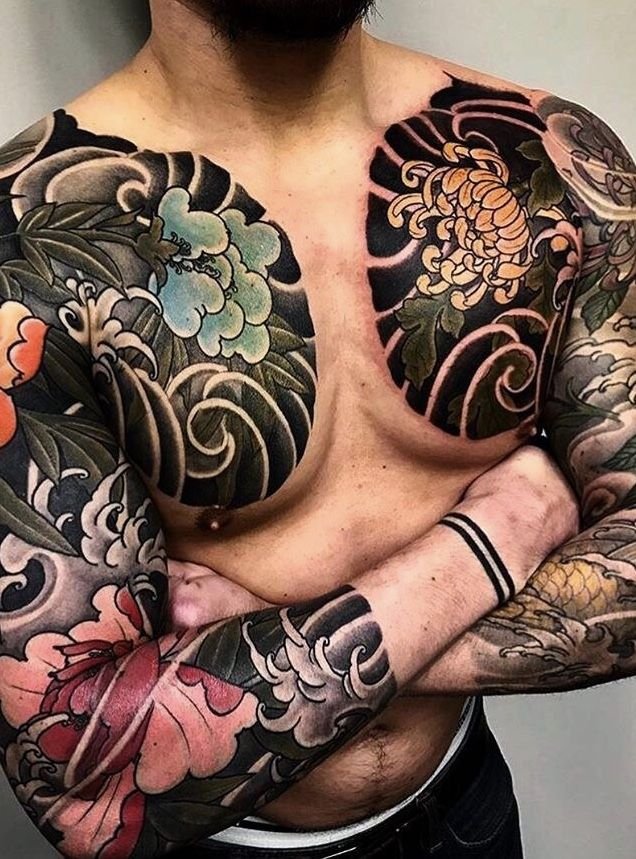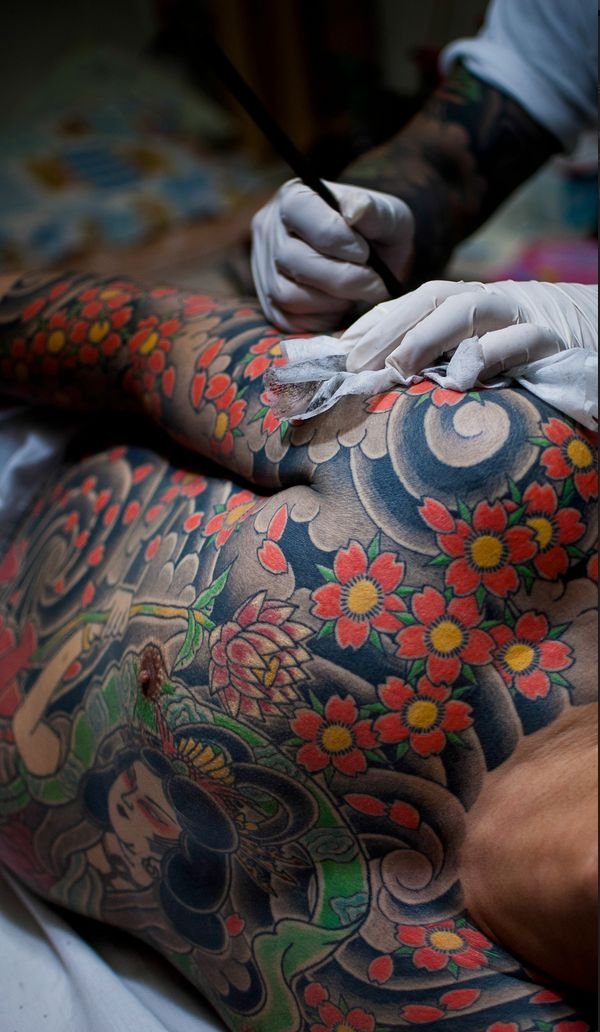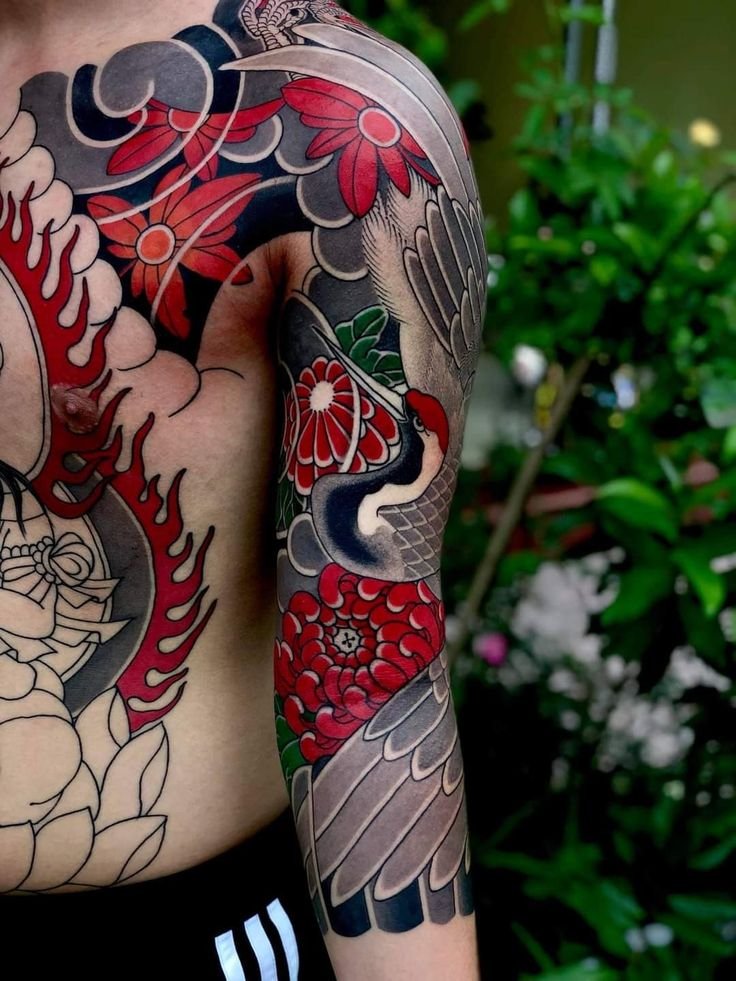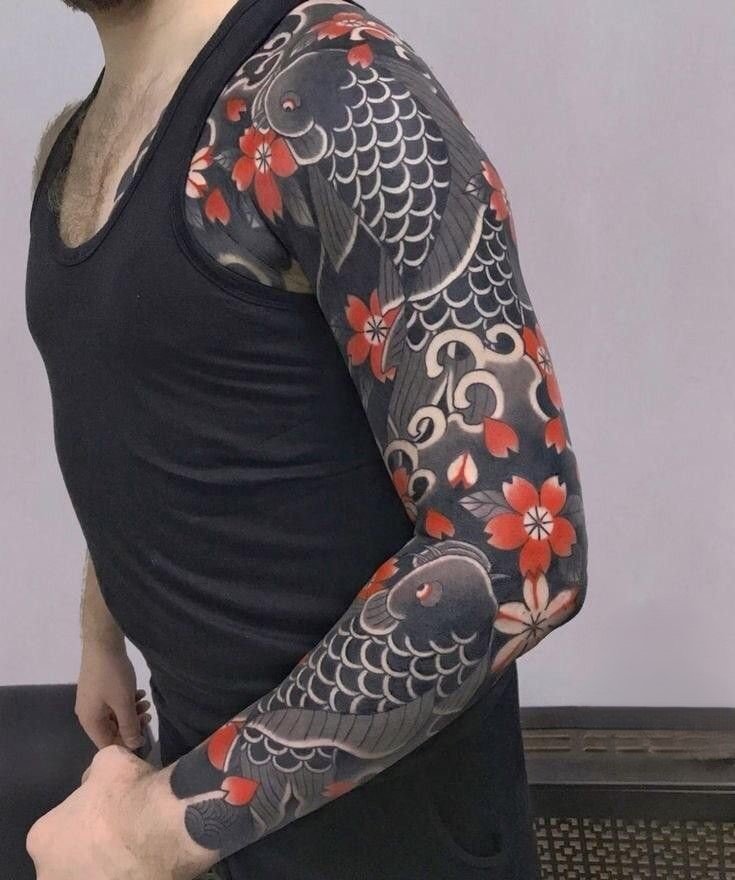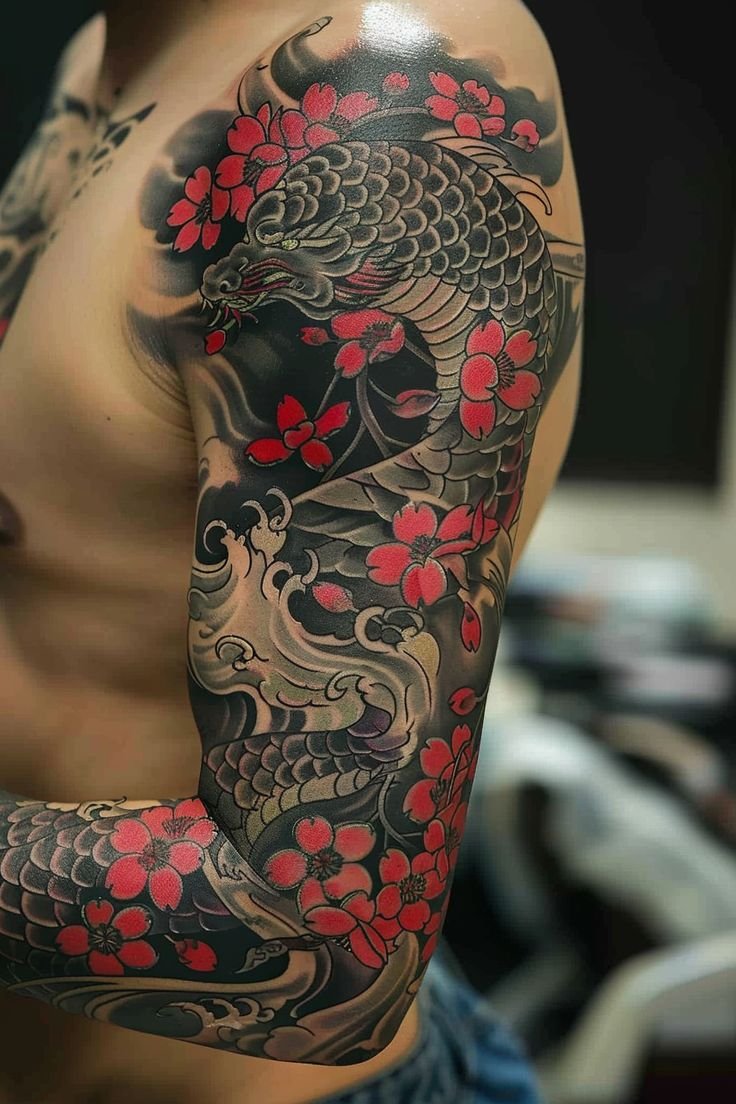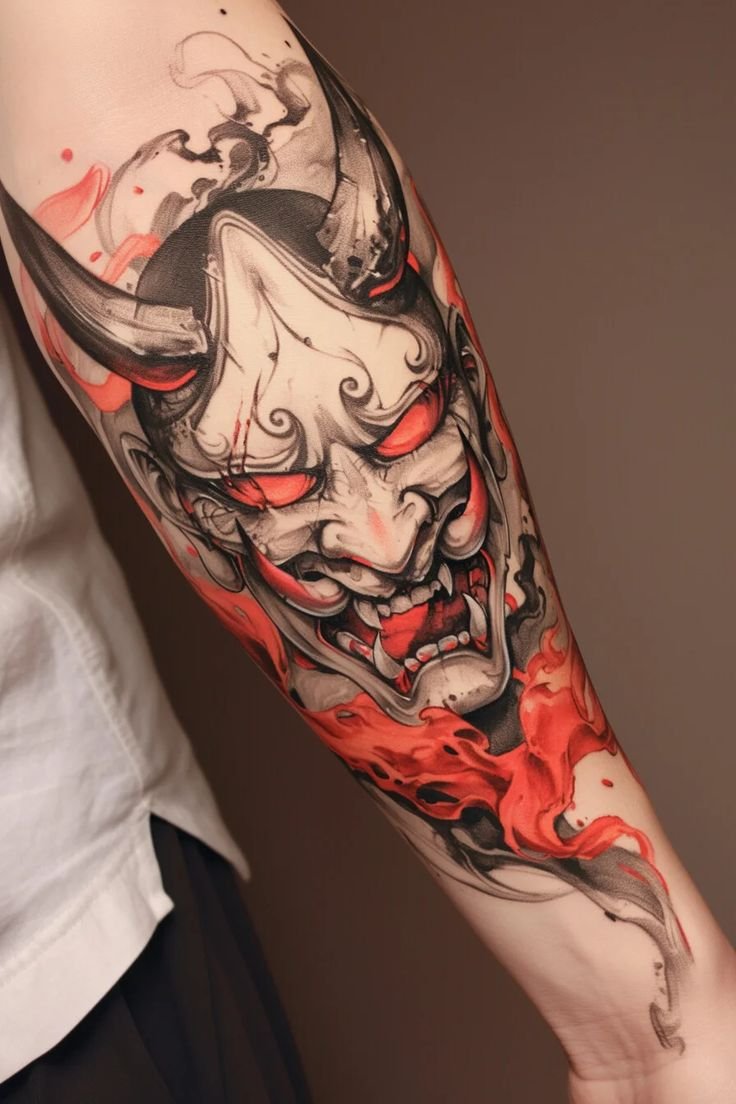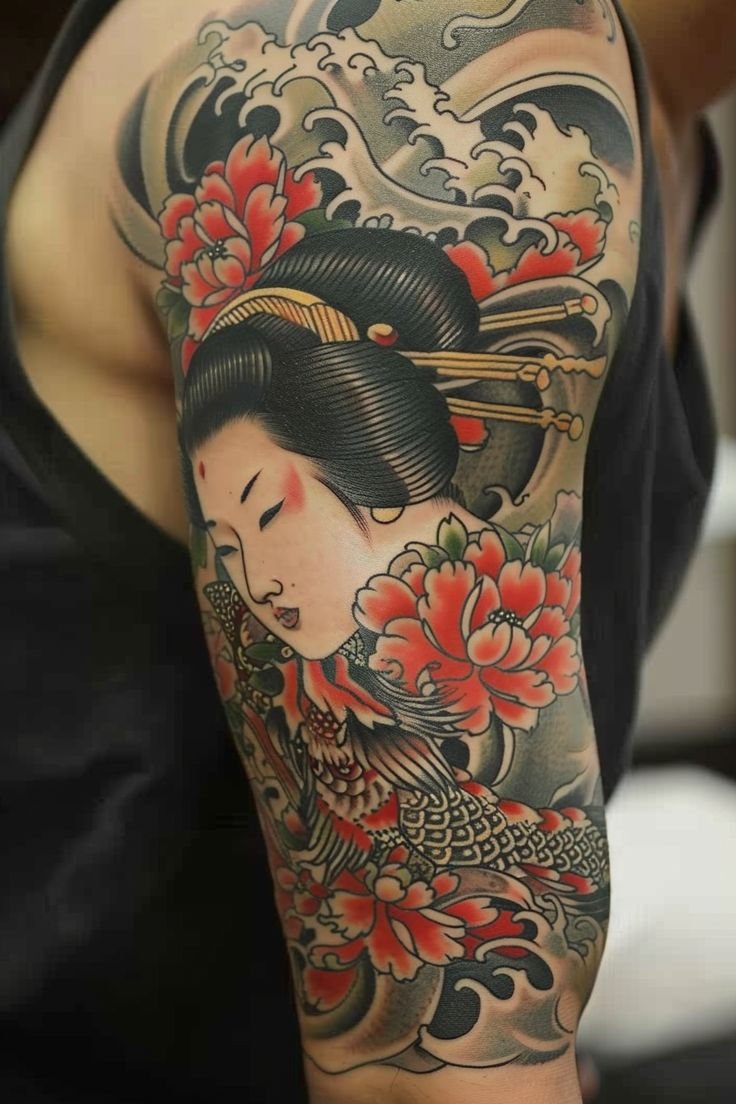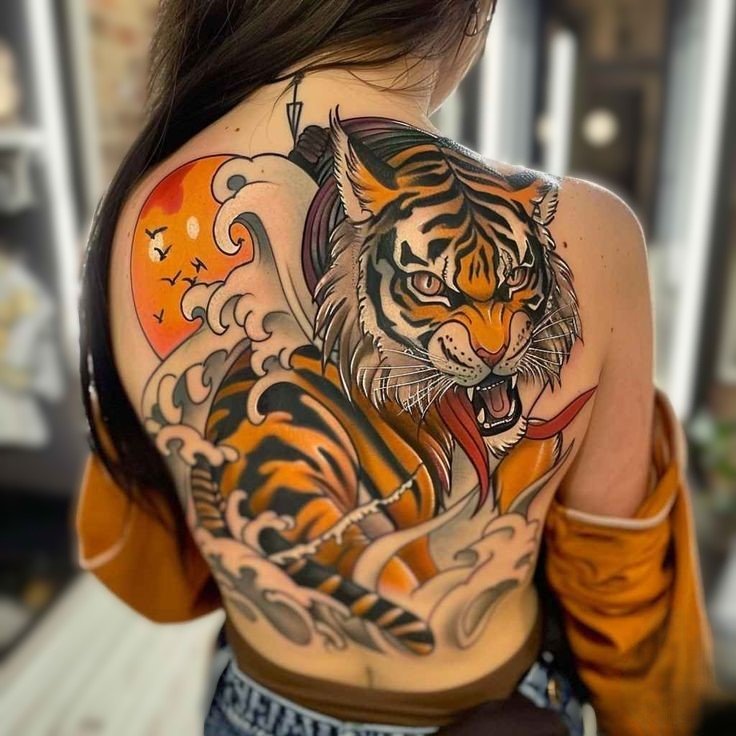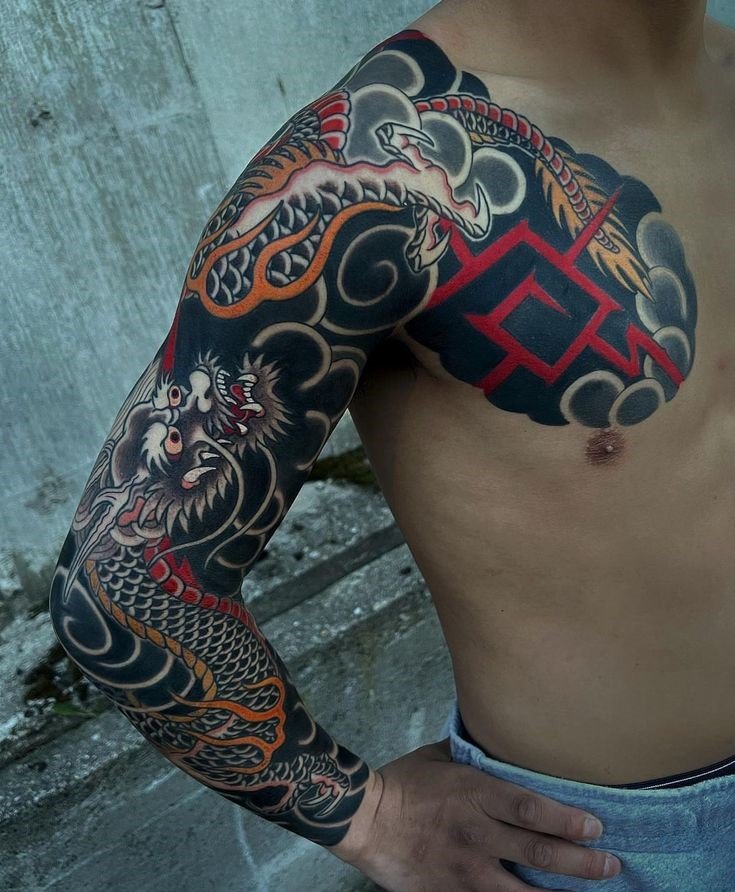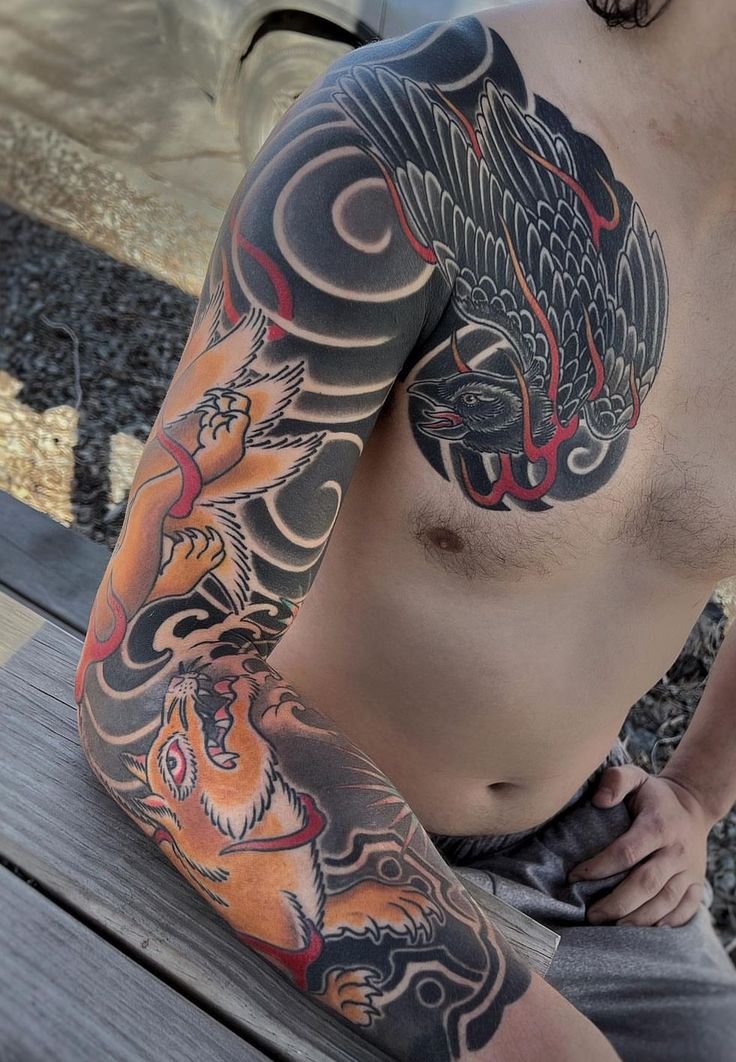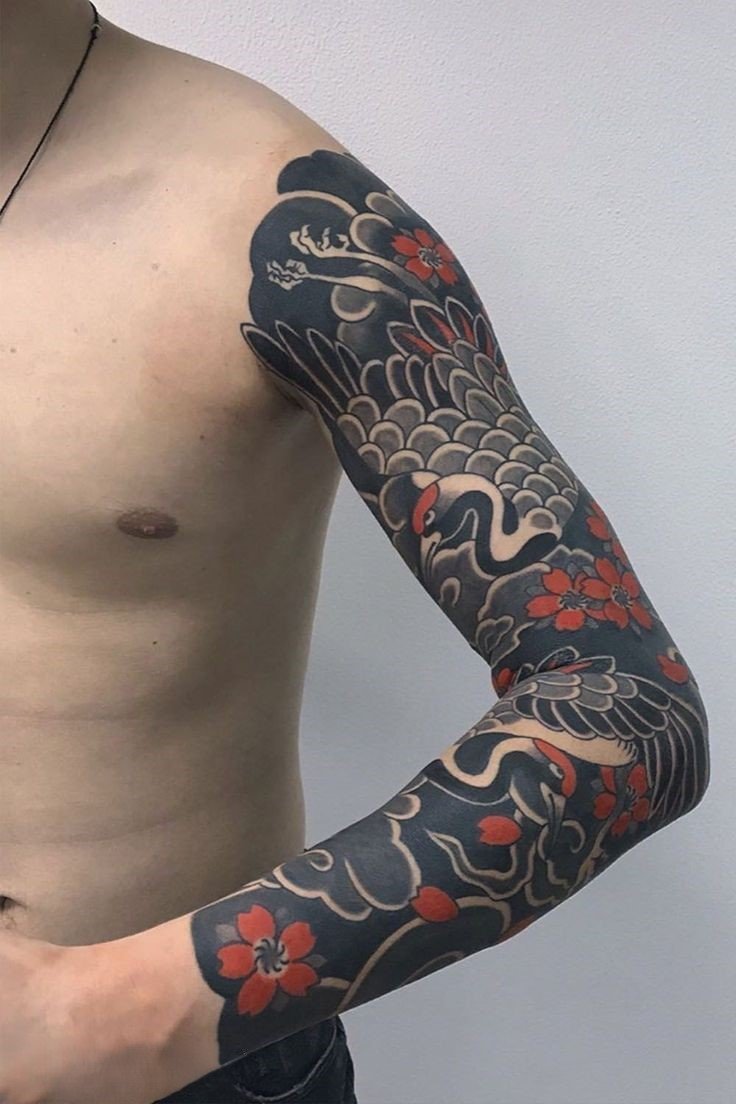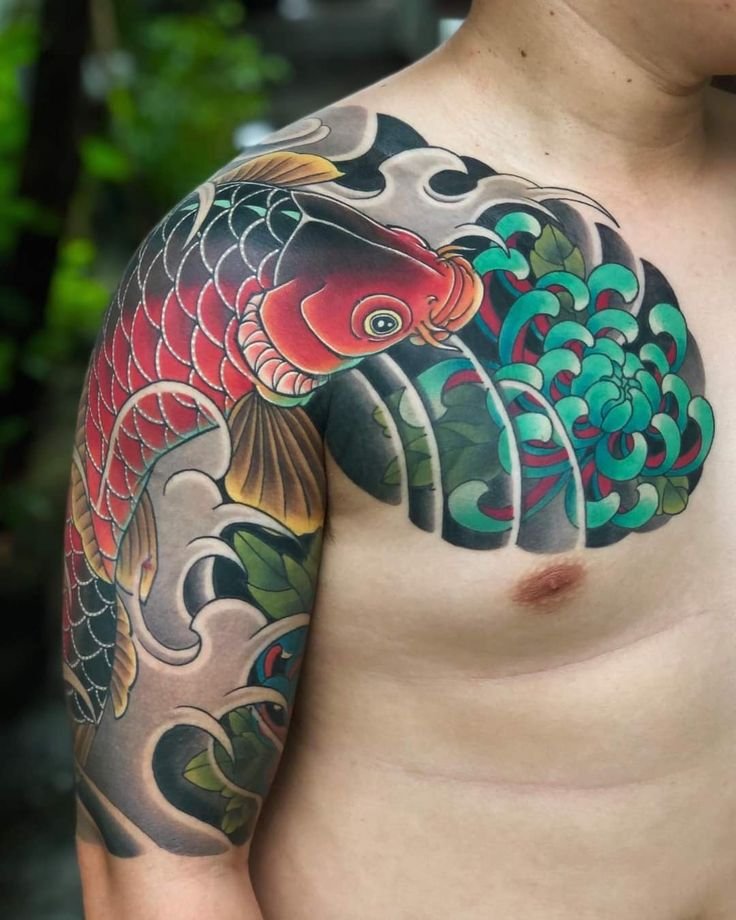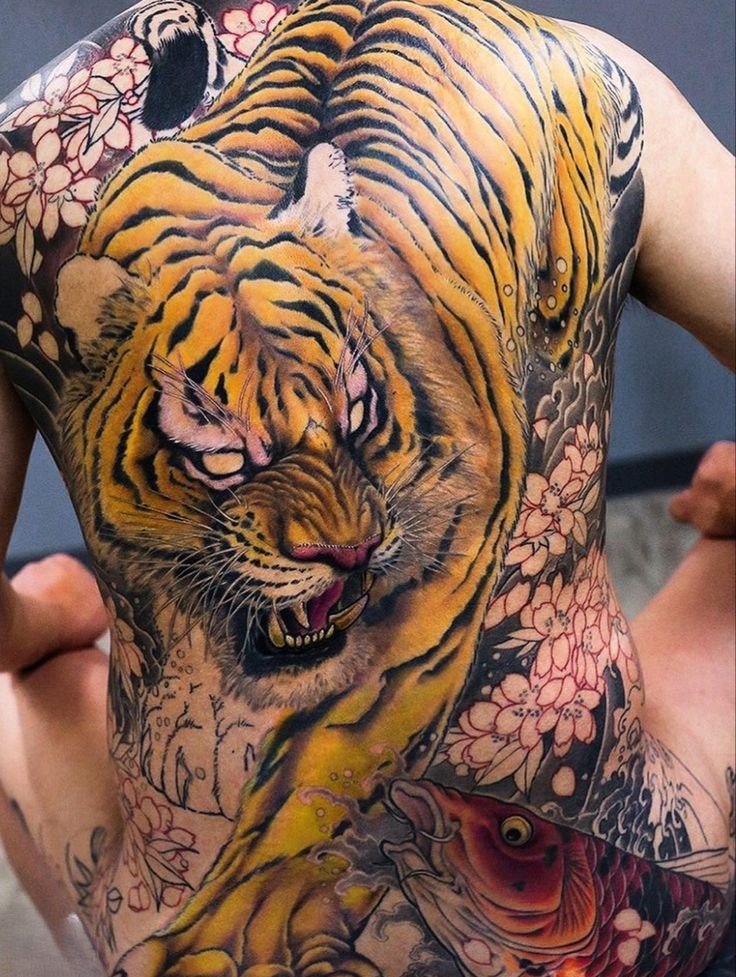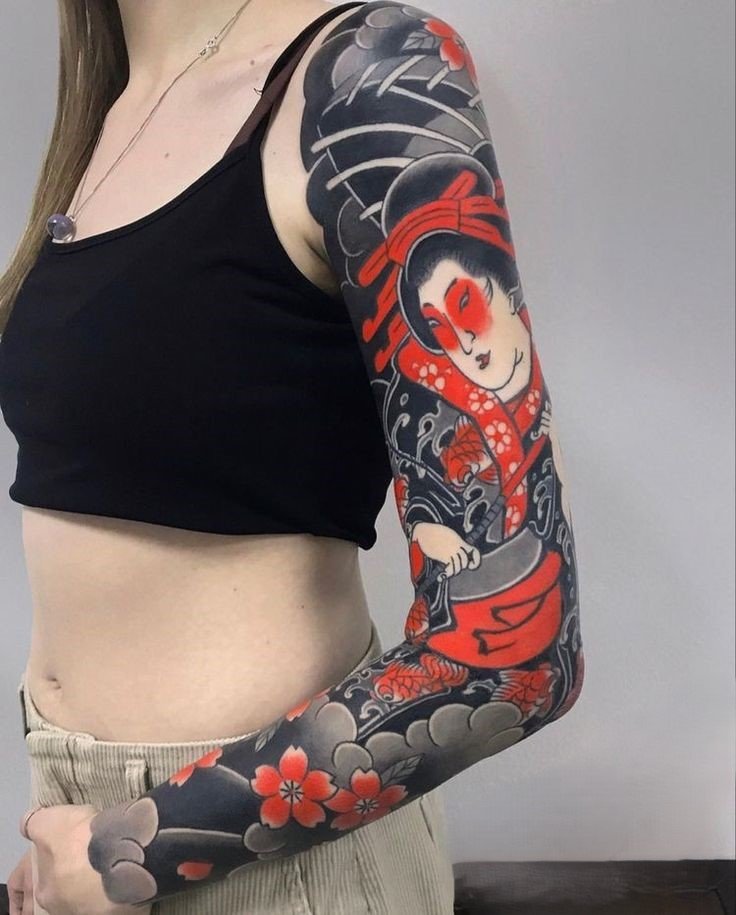Japanese Tattoos:
History, Symbolism,
and Modern Trends
Japanese tattoos are not just art, but a whole culture with deep roots, rich traditions, and unique symbolism.
These tattoos, which embody harmony, strength, and spirituality, have gained worldwide recognition. Although Japanese tattoos are often associated with specific symbols and styles, their meaning goes far beyond mere decorative images. In this article, we dive into the world of Japanese tattoo art, its history, significant symbols, and modern trends.
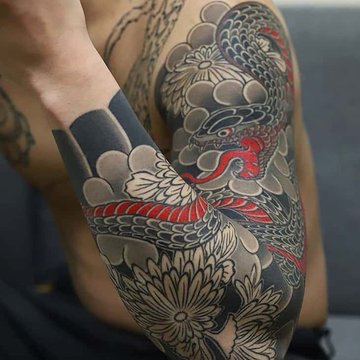
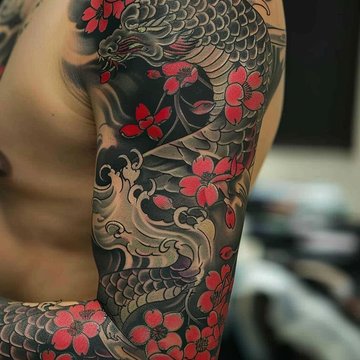
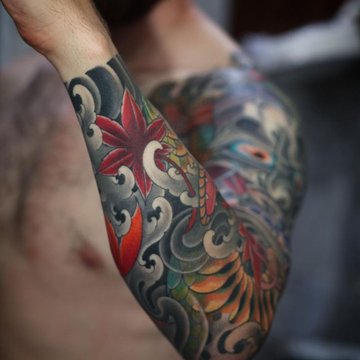
History of Japanese Tattoos
Japanese tattoos (irezumi) have a long history dating back to ancient times.
The first references to tattoos in Japan date back over 5,000 years, and since then, this tradition has undergone many changes. Unlike Western tattoos, Japanese designs have always been linked to culture, beliefs, and social structure.
Ancient Origins: Tattoos in Japan were originally used as symbols indicating status or belonging to a specific social group. For example, during the Nara period (710–794 AD), people wore tattoos to indicate their social position and also as a means of protection against evil spirits. These tattoos were worn by tribes and peasants and sometimes used for ritualistic purposes.
Edo Period (1603–1868): During this period, tattoos became more skilled and intricate. Large and vibrant images began to appear on the bodies of commoners and sailors, depicting various legends, myths, and historical events. This was the time when the irezumi style started to take shape.
Prohibition and Revival: In the late 19th century, Japanese authorities imposed a ban on tattoos, as they were associated with the lower classes and criminal activity. However, tattoos did not disappear but continued to evolve underground. In the 20th century, tattoos regained popularity and have since become an important part of Japanese culture.
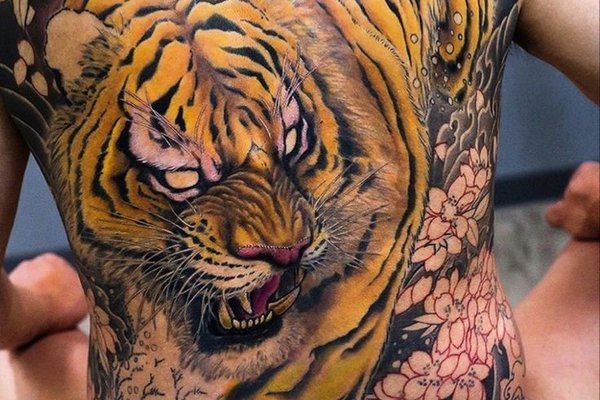
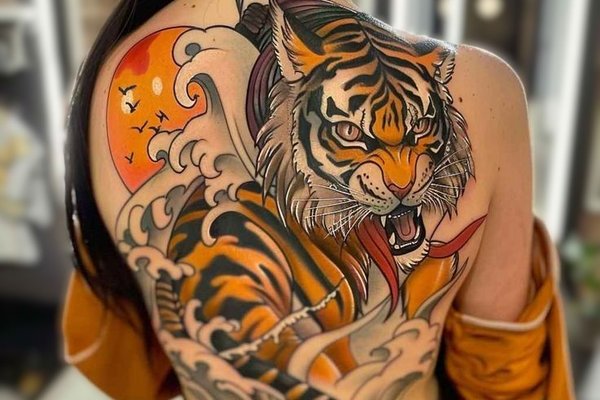
Symbolism of Japanese Tattoos
Every Japanese tattoo carries rich symbolism that can convey various ideas, emotions, or values.
Here are some of the most popular symbols:
- Dragon — a symbol of power, wisdom, and luck. In Japanese mythology, dragons can be both good and evil creatures. A dragon tattoo often represents the pursuit of respect and authority.
- Koi Carp — a symbol of perseverance, overcoming hardships, and striving for self-improvement. The legend of the koi carp turning into a dragon after swimming up a waterfall is associated with determination and resolve.
- Phoenix — a symbol of rebirth, renewal, and immortality. A phoenix tattoo often signifies spiritual regeneration or recovery after hardship.
- Flowers — such as chrysanthemums and lotuses, which symbolize purity, rebirth, and harmony. They are also associated with beauty and the transience of life.
- Animal Imagery — Tigers, lions, turtles, snakes, and other animals have various meanings depending on the culture and context. For example, the tiger represents bravery and strength, while the turtle symbolizes longevity and wisdom.
- Skulls and Oni (Demons) — symbolizing the struggle with inner demons, fear, and purification through trials.
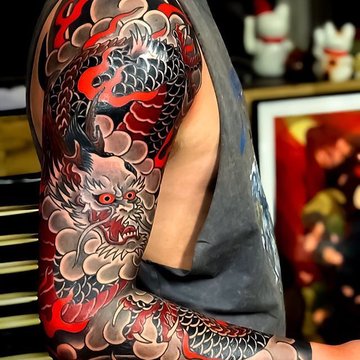
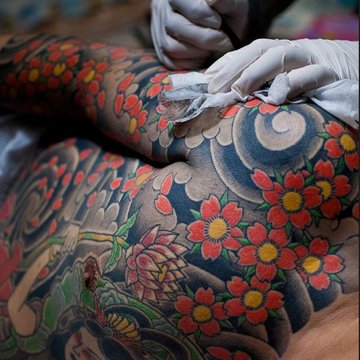
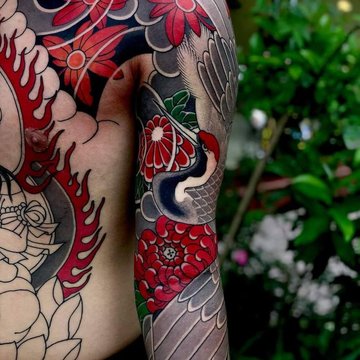
Features of Irezumi Style
Japanese tattoos have several distinctive features that make them unique:
- Large compositions. Unlike Western tattoos, which can be small and localized, Japanese tattoos often cover large areas of the body. These can be full sleeves, backs, chests, or even legs.
- Bright and vibrant colors. Japanese tattoos are known for their rich palette, often using red, green, blue, and black colors. These colors enhance the vividness of the images.
- Geometry and symbolism. Japanese tattoo art frequently uses clear lines and geometric forms, giving the tattoos a unique sense of harmony.
- Connection with nature. Many Japanese tattoos depict elements of nature — flowers, water, waves, mountains — emphasizing the deep connection between humans and the natural world.
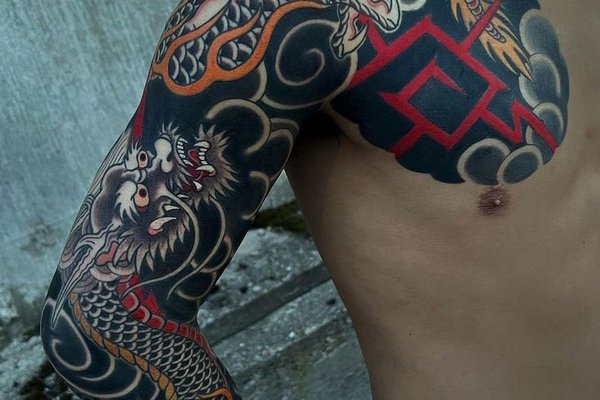
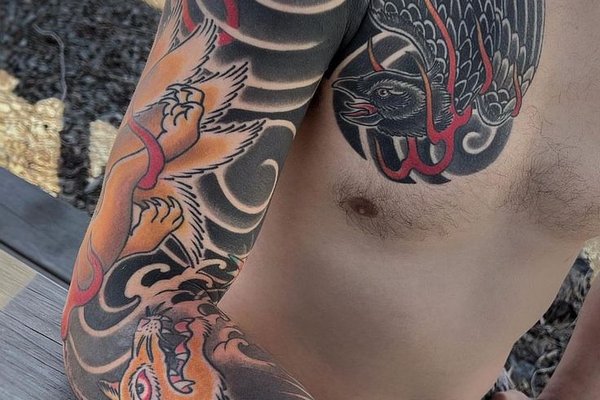
Modern Trends
in Japanese Tattoos
Japanese tattoos continue to remain popular in contemporary tattoo art.
Artists often add new elements and stylistic approaches, interpreting traditional designs in modern ways.
- Minimalism in Japanese Style. In recent years, minimalist approaches have emerged, where tattoos retain Japanese symbolism but are more concise and subtle. These tattoos are often done in black and white, with simpler designs.
- Hybrid styles with other tattoo techniques. Modern Japanese tattoos sometimes blend elements of traditional art with styles like geometry, watercolor, or realism. This allows for fresh and unique compositions while retaining the essence of the original style.
- "New School" Japanese Tattoos. Some modern artists give Japanese tattoos a new twist, using bright and unusual colors, creating a unique fusion of tradition and modernity.
- Realistic Japanese Tattoos. Some tattoo artists incorporate realistic imagery of animals, flowers, and mythological creatures, giving the tattoos a near-photorealistic look while still maintaining traditional motifs.
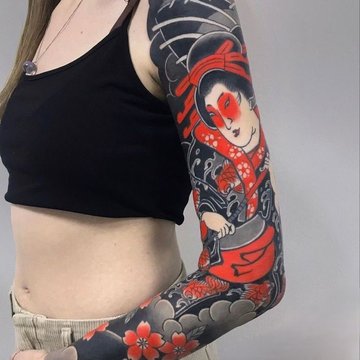
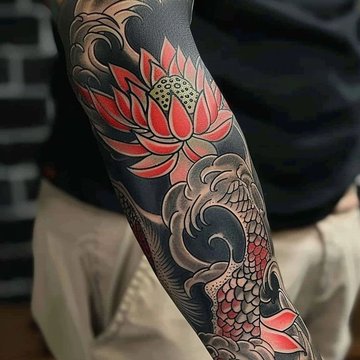
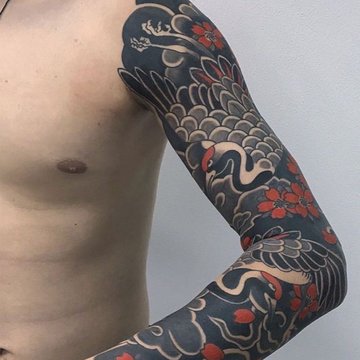
Ideas for Japanese Tattoos
- Koi Carp in Water — symbolizes overcoming obstacles and achieving goals.
- Dragon and Clouds — a tattoo of a dragon breaking through clouds represents the pursuit of strength and wisdom.
- Cherry Blossom (Sakura) — symbolizes the fleeting beauty of life and renewal. Cherry blossoms also represent rebirth and new beginnings.
- Tiger with Flowers — combines strength and bravery with the inner beauty of life.
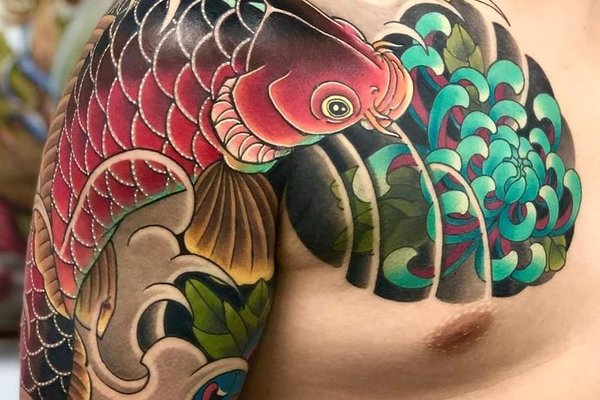
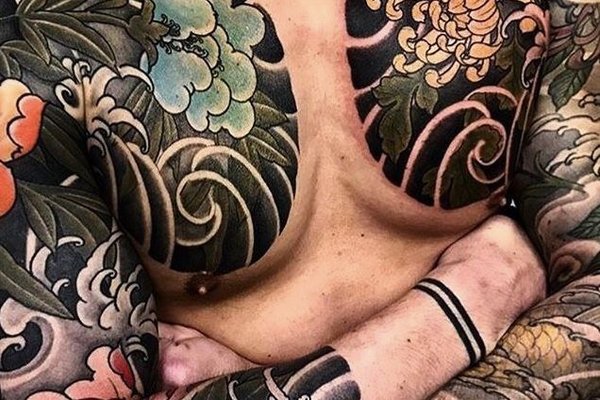
Conclusion
Japanese tattoos are not just images, but expressions of philosophy and worldview.
Each tattoo carries deep symbolism, and its history and meaning can be unique to the individual. If you want a tattoo that reflects your strength, wisdom, and connection to the world, the Japanese style is an excellent choice. At VEAN TATTOO, our artists will help create a custom design that highlights your individuality and becomes an important part of your life.


 Make a sketch in the AI VEAN TATTOO generator
Make a sketch in the AI VEAN TATTOO generator
